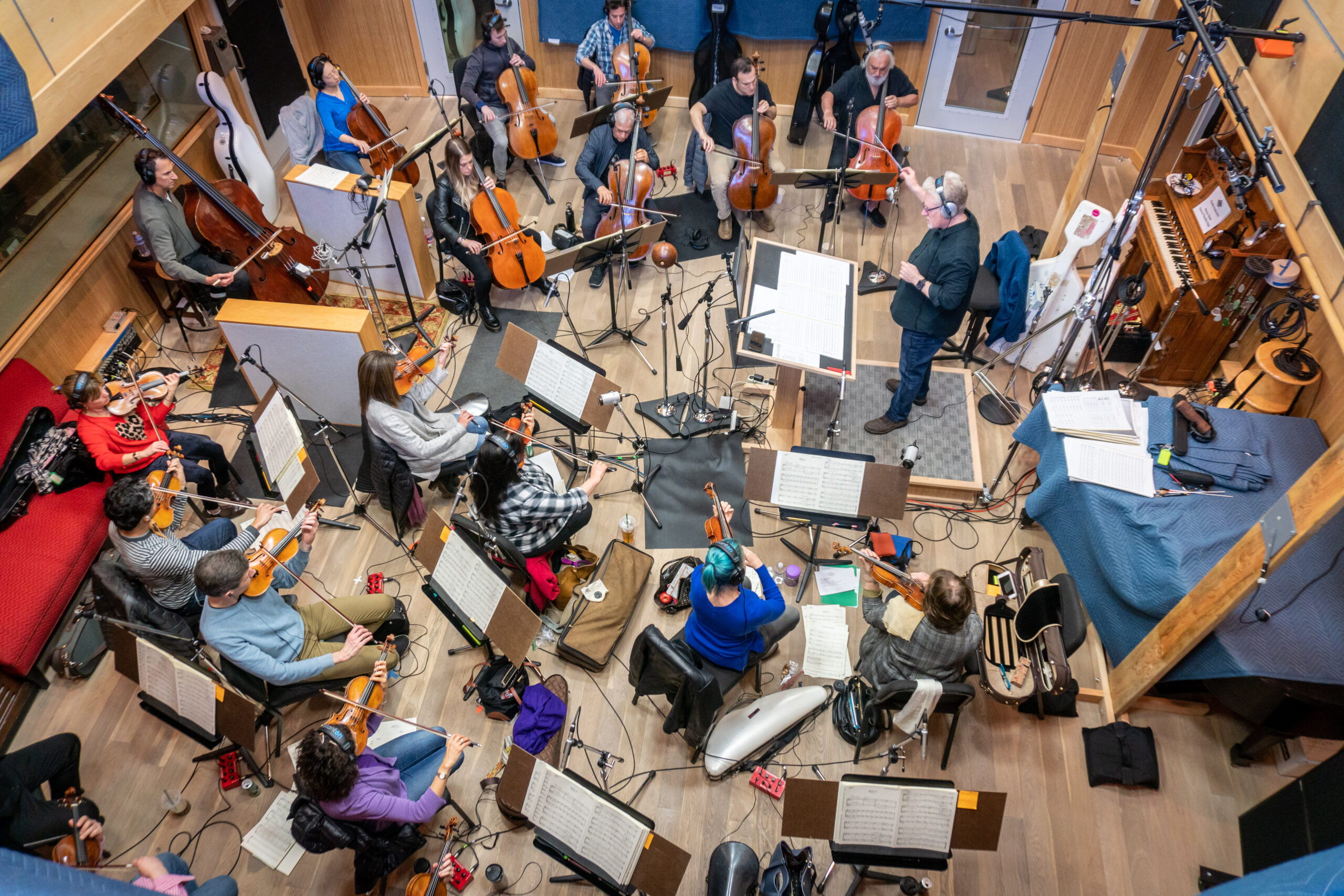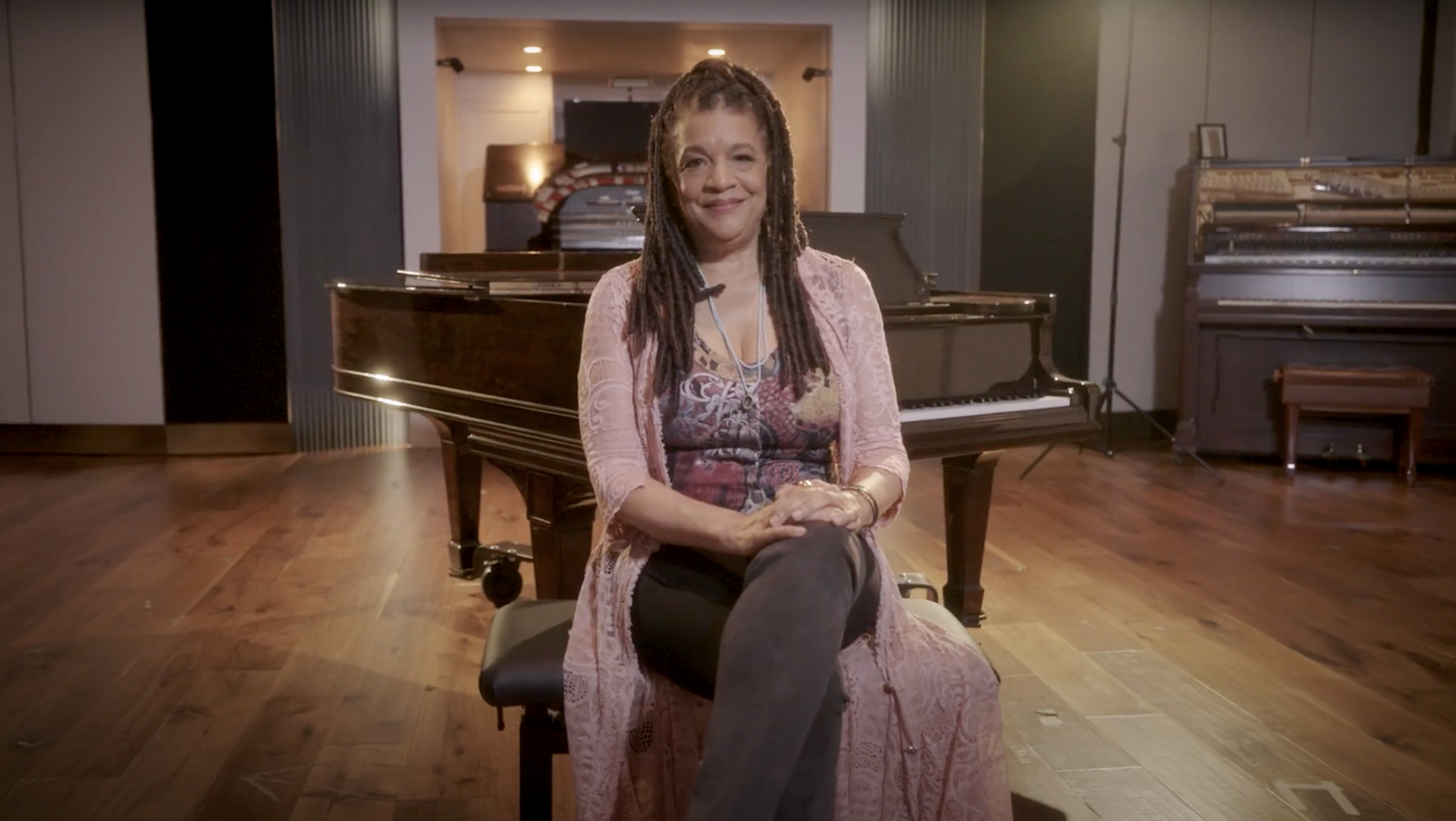

Emmy-nominated for American Masters’ “Amy Tan Unintended Memoir,” the notably elegant Bostic has created soundtracks that traverse a wide range of films, shows and documentaries that often deal with womenhood and the black experience. She’s given musical voice to the acclaimed poet “Toni Morrison: The Pieces I Am,” disturbingly evoked a warden faced with carrying out the death penalty in “Clemency,” humorously embraced the pc satire of “Dear White People,” accompanied any number of August Wilson plays on stage and created new music for the silent movie aviatrix “The Flying Ace.” Now the “Supremes” takes the songwriter-vocalist-composer to new melodically warm heights for this engaging sisterhood. Centering around a piano-topped orchestra that’s particularly suited to the thwarted concert dreams of a character, Bostic goes straight to the heart while also thematically showing off a range of approaches from the blues guitar to soulful female voiceand the enervating song “State of Grace.” It’s a poignant, tissue-reaching score that offers up this particular genre’s best kind of scoring comfort food, all while revealing new, moving facets to Bostic’s talents in way that ends up being emotionally tasty indeed.

How did you come aboard the “Supremes?”
I was brought onto the production through director Tina Mabry. Tina and I had worked together before on a TV series, “Woman of the Movement,” and she was one of the directors on it. We reconnected afterwards and she asked me to be the composer on “The Supremes.” I happily agreed to it!
Whether it’s “Diner,” “The Joy Luck Club” or “The Inkwell,” do you think there’s a universal cinematic quality of friendship standing the test of time, and often gathering at a favorite hang out that “Supremes” taps into. How did you want the music to reflect that?
There’s a universal quality of friendship that has longevity. The journey of these friendships is very special and has a broad range of experiences. Often there is a shared catharsis that these friendships undergo because people change. You change your lives. Your relationships change. So those relationships that sustain over the test of time are very special and very important. In terms of a cinematic quality, I look at music as a narrative that can underscore that dynamic. And “cinematic” has different connotations. I look at the music as underscoring the emotional conversation within this friendship.

Tina Mabry
Tell us about your collaboration with filmmaker and co-screenwriter Tina Mabry here?
My collaboration with Tina Mabry was fantastic. She was extremely gracious and open to our process, and she also brought in this fabulous editor, Tariq Anwar, who had taken a large amount of my personal library and had temped that in as a starting point. So the three of us had a very good understanding of the score we wanted, and this also enhanced our collaboration. It was an incredible experience.
Who was your favorite character to score? Did you pay particular attention to Clarice, who’s a thwarted pianist?
When I first started this collaboration, Tina asked me to write a theme for the character Clarice, who is an accomplished classical pianist, but chose to put that aside for a more personal and family-oriented lifestyle. The first cue Tina asked me to write was the Clarice theme because I have a background in classical piano. My mother was a classical pianist. She would play for hours in our home. I grew up listening to a lot of classical music, jazz and other styles as well. But my mother particularly loved classical piano. So this was something very natural for me and the Clarice theme pretty much wrote itself. I just tapped into her emotional zeitgeist, which was one of so many. It’s such a range of complex emotions. She’s fragile, she’s strong, she’s romantic, she’s undergoing doubts about her personal relationship with her husband and her personal relationship with herself. So I wanted that piano theme to be tender and vulnerable. And at the same time, I also wanted it to cascade into this sort of call to arms of release and relief and recognizing oneself. I would say that Clarice piano theme, and just piano in general, was a big part of what we all decided this score needed to have as a common denominator in the music.

The “Supremes” often veers from tragedy to comedy from one scene to the next. Was that difficult to do those jumps tonally?
In this particular movie, it wasn’t that difficult because I always look at music as storytelling. So for me, it’s following the nuance. And depending on the direction I’m given, it’s either a subtle underscore or it’s more pronounced. It’s really a matter of taking direction and then yielding to the nuance that’s needed.
How did you want the score to link the two time threads the movie jumps between?
The soundtrack of songs really helped. I think a lot of the source cues enabled the time jump whereas the score revealed more of the emotional journey.

Given some of the big, turbulent events that happen to the women, was it a challenge to keep the score a more subtle emotional keel as opposed to it slipping into territory that could be overly dramatic? And how did you meet that challenge?
The direction that I was given, and often a direction I like to take on my own initiative is not to over score the obvious. I like to let the intention and the dynamic performance of these actors serve as how the audience is informed emotionally. I’m very selective about how I score the emotional landscape of a scene and the emotional arc. In that way I’m very conscientious to nuance so that it doesn’t overstate the obvious.
The characters often talk about religion and prayer. Could you talk about capturing that facet of them?
The music that I write already comes from a very visceral and internal place, an internal sanctuary. And in this case, it lends itself to this score in this movie. The characters are all going through their own internal journey, whether it’s a higher power or their inner sanctuary of strength.

I particularly liked your scoring of the “amends” sequence, where you see humane sides to even Clarice’s awful husband Richmond. Could you talk about your approach there?
In that particular scene, we talked about creating this sort of sonic, back and forth. We talked about the intersectionality of all of these characters having a resolve to move forward to better their lives. So again, the piano is the primary through line in terms of how the cue is built and then stripped down, and it’s layered with orchestral elements that are primarily strings and woodwinds. I did not really want to be heavy handed with a lot of sounds and textures that I thought would get in the way of the visceral aspect of this narrative. It was just important to let the music speak to what I was viewing. I always have a conversation with the visual. So it’s about knowing when to be silent or quiet enough so that you’re still impactful. When you come back in with a musical high point or a musical resolve, it makes sense. So that scene is a montage. It’s a collage of musical idiom that reflects these couples and what they are all going through at the same time, even though they’re not all in the same space, they’re all going through a pivot, a shift in their interaction. So the music, rather than hit all of those points, was more of a witness and more of an arc that referenced the common denominator of all these different exchanges.

Tell us about your song “State of Grace.”
“State of Grace” is a song I wrote a while ago about the desire and need to have an inner sanctuary. It is a touchstone for one’s sense of peace and ability to have a safe space within your life and within yourself. The song is also about surrendering and trusting the changes that happen in life. To be open, be able to yield to what’s new, what’s unknown, what is possible, and to have a tremendous amount of trust and faith in that journey.
In the end, I think “Supremes” is a movie that anyone can have a good three-hanky time with. It’s as far away from a movie and score like “Clemency” that you can get. In that respect, I’d say it’s the most accessibly feel-good feature you’ve scored yet. Would you like to score “happier” projects like this?
I’m open to scoring anything that’s going to be an impactful narrative. I’m not necessarily one who has a specific genre to write in, to write for, to score for. It’s like going to different restaurants. I don’t like to go to the same type of restaurant all the time. I like trying different foods. For me, it’s like going to a soundscape buffet that has all these different options. So as long as I’m working on a project that I resonate with and is going to be impactful, whether it has levity and is happier, or whether it’s intensely dramatic and thought provoking, that’s what is important.

What’s your favorite place to eat with your friends?
My friends and I used to go this restaurant Fiddler’s Bistro over on 6th street in Los Angeles in the Miracle Mile area. Sadly, it’s closed now. But the food and the vibe always delivered for a down-home family feeling and we’d hang out there for hours catching up and enjoying the wide range of a great menu! It was a relaxed atmosphere with FANTASTIC food!
Watch “The Supremes at Earl’s All-You-Can-Eat” on Hulu HERE, with Kathryn Bostic’s score on Hollywood Records HERE. Visit Kathryn’s website HERE
Special thanks to Ray Costa and Sam DeFrank


